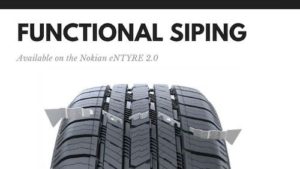The name of all-season tires is a bit confusing, as the tires shouldn’t be used during the winter season. They should only be used during the warm seasons such as spring, summer and fall. For the winter season if you have winter conditions that include low temperatures, snow, ice and slush, you will need to change the tires to winter tires. There is also a group of tires that are called all-weather tires, these can actually be used during all the seasons, including winter. They are made for all-year round use and can handle snow, ice and slush just as well as hot dry or wet tarmac.
You basically have 4 main categories of tires, all-season tires, all-weather tires, winter tires with studs and winter tires without studs. Of these there is only the all-weather tires that can be used all-year round, unless you live in an area where you don’t have any winter weather conditions and can manage with all-season tires throughout the year. For tires that will be used in winter conditions, it is important to check that they have the severe service emblem on the sidewall of the tires. It isn’t sufficient to have the M+S marking, which just indicates that they have a tread pattern that can handle mud and snow. The performance however is not guaranteed. The only tires that can’t be used in winter conditions are the all-season tires. They have to be complemented by switching to winter tires before the snow arrives. The best is to be out in good time and change to winter tires as the temperature approaches 45 degrees Fahrenheit, which is when the winter tires are superior compared to all-season tires when it comes to performance and safety.
For safe driving during any weather condition it is important that you match the tires according to the weather conditions. Winter tires are not your best choice during the summer, but during the winter with snow and ice, you definitely need the grip and traction that they can provide. Without the ability to have grip on snow and ice you will not be able to get very far on winter streets. So if you wake up in the morning to find the streets covered with snow and you still have your all-season tires on your vehicle, you will need to change to winter tires without driving or then find alternative mode of transportation until the snow has disappeared.
If you live in e.g. Florida, you can probably manage with using only all-season tires all-year round. You don’t have to worry about snowstorms or winter conditions. If you still want to be protected for any possible winter weather or you travel occasionally to areas that have winter conditions, your best choice is probably using a set of winter approved all-season tires. It is remember that tires should always be used as full set, you should never try to use only 2 winter tires combined with all-season tires.
For more information regarding tires to be used during winter conditions, visit: https://www.nokiantires.com/

